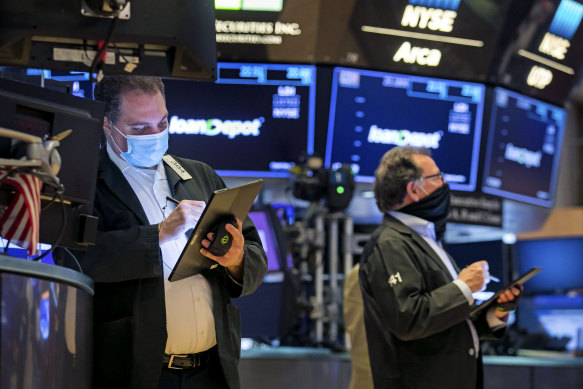ASX down in early trading; Mining stocks lift
By Carla Jaeger
The ASX200 has opened on Friday in negative territory following Wall Street’s slip overnight, as markets around the world react to interest rate hikes.
The local bourse has shed 0.94 per cent, or 63.3 points, to 6,636.9 points in early trading. Ten of the 11 sectors trading in the red, with the real estate sector providing the heaviest drag, down 1.4 per cent.
Meanwhile, the financial sector has dropped 0.76 per cent, with all big four banks on the decline. Tech stocks have dropped 0.31 per cent, as accounting software company Xero shed 4.27 per cent.
Elsewhere, mining stocks are lifting, as market heavyweights BHP and Rio Tinto rise 1.63 per cent and 2.89 per cent, respectively.
Wall Street fell lower on Thursday, adding to weekly losses for major indexes as central banks around the world hiked interest rates to fight inflation.
The S&P 500 fell by 0.8 per cent, while the Dow Jones dropped 0.4 per cent and the Nasdaq lost 1.4 per cent. Every major index is solidly on track for weekly losses. The Australian sharemarket is set to open lower, with futures at 6.15am AEST pointing to a fall of 13 points, or 0.2 per cent. On Thursday, the ASX was closed due to the national day of mourning to mark the passing of the Queen. On Wednesday, the ASX tumbled by 1.6 per cent.

Wall Street’s losses were broad and led by retailers, technology stocks and industrial companies. Starbucks lost 4.4 per cent, American Express shed 3.8 per cent and UPS dropped by 3.4 per cent. Amazon lost 1 per cent.
Smaller company stocks fell more than the broader market in a sign that investors were worried about the economy. The Russell 2000 fell 2.3 per cent.
Bond yields rose. The yield on the 2-year Treasury, which tends to follow expectations for Fed action, rose significantly to 4.12 per cent from 4.02 per cent late Wednesday. It is trading at its highest level since 2007. The yield on the 10-year Treasury, which influences mortgage rates, jumped to 3.69 per cent from 3.51 per cent from late on Wednesday.
Investors are worried that the Fed could get even more aggressive on interest rates, but if prices stabilise that won’t need to happen, said Barry Bannister, chief equity strategist at Stifel. It could take more than a year for that process to play out, he said.
“The question is, what’s the patience level for both the Fed and the market,” he said.
Central banks in Europe and Asia raised interest rates a day after the Federal Reserve made another big rate hike and signalled that more were on the way.
Britain’s central bank raised its key interest rate by another half-percentage point. Switzerland’s central bank raised its benchmark lending rate by its biggest margin to date, 0.75 percentage points, and said it couldn’t rule out more hikes. Central banks in Norway and the Philippines also raised interest rates.
The Fed and other central banks are raising interest rates in to make borrowing more expensive. The goal is to slow economic growth enough to tame inflation, but not so much that economies slip into a recession. Wall Street is worried that the Fed may be pumping the brakes too hard on an already slowing economy, which makes steering into a recession more likely.
On Wednesday, Fed chair Jerome Powell stressed his resolve to lift rates high enough to drive inflation back toward the central bank’s 2 per cent goal. Powell said the Fed has just started to get to that level with this most recent increase. The US central bank lifted its benchmark rate, which affects many consumer and business loans, to a range of 3 per cent to 3.25 per cent. That is the fifth rate hike this year and up from zero at the start of the year.
The Fed also released a forecast known as a “dot plot” that showed it expects its benchmark rate to be 4.4 per cent by year’s end, a full point higher than envisioned in June.
AP
Most Viewed in Business
Source: Thanks smh.com